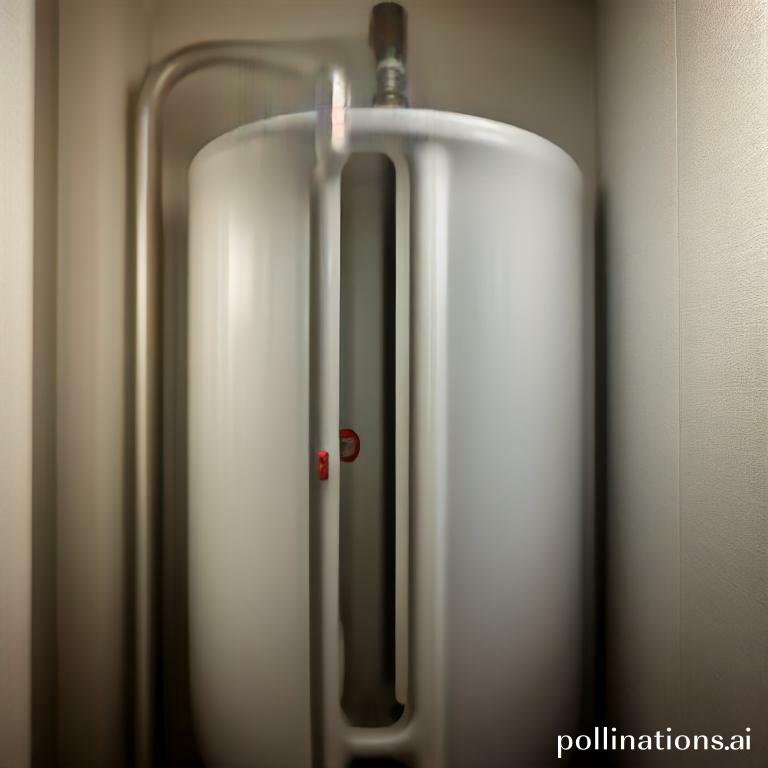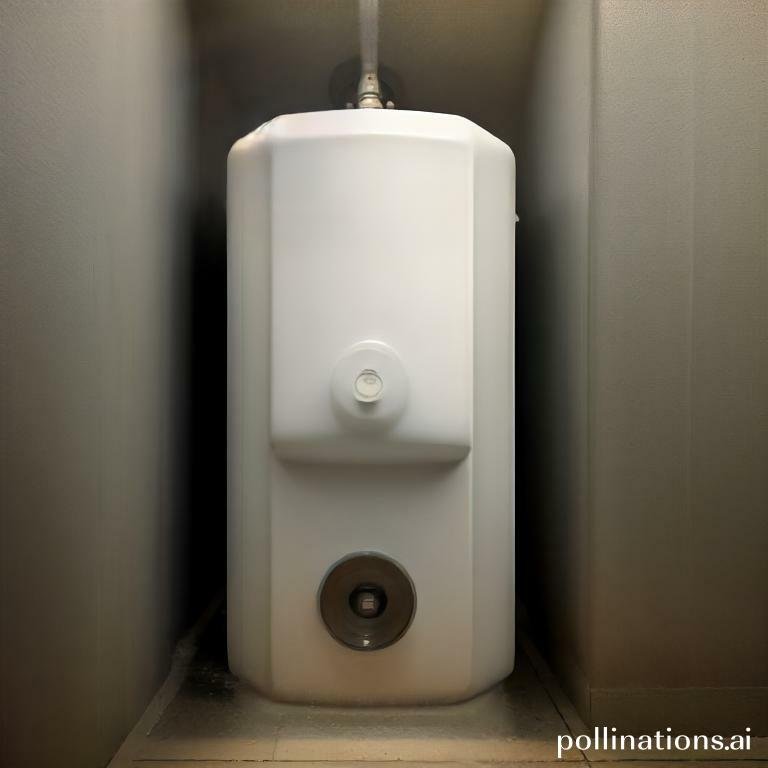
II. As a first-time water heater owner, it’s important to follow the manufacturer’s instructions and safety precautions.
III. DIY flushing tips include turning off the power supply, connecting a hose to the drain valve, and flushing the tank until the water runs clear.
Are you a first-time water heater owner? If so, we’ve got you covered with some DIY flushing tips.
Flushing your water heater regularly is crucial for maintaining its efficiency and prolonging its lifespan. In this article, we’ll walk you through the step-by-step process of flushing your water heater, ensuring that you have hot water whenever you need it.
From preparing the necessary tools to draining the tank, we’ll provide you with all the essential information to keep your water heater in top shape. Let’s get started!
Mastering Your Water Heater
1. Types of Water Heaters and Their Differences
A water heater is an essential appliance in any household, providing hot water for various purposes. There are different types of water heaters available, each with its own unique features and advantages.
Electric Water Heaters: These water heaters use electricity to heat the water. They are generally more energy-efficient and have a lower upfront cost compared to other types. Despite this, they may have a slower recovery rate and higher operating costs in some cases.
Gas Water Heaters: Gas water heaters utilize natural gas or propane to heat the water. They provide fast and efficient hot water supply, making them a popular choice for many homeowners. Gas water heaters may have a higher upfront cost and require proper venting for safety.
Tankless Water Heaters: Tankless water heaters, also known as on-demand water heaters, heat the water directly as it flows through the unit. They offer endless hot water supply and are highly energy-efficient. Nevertheless, they may have higher installation costs and require a larger gas supply for gas-powered models.
Solar Water Heaters: Solar water heaters harness the power of the sun to heat the water. They are environmentally friendly and can significantly reduce energy costs in the long run. Nonetheless, they may have higher upfront costs and require adequate sunlight for optimal performance.
2. How Water Heaters Work and Why Flushing is Necessary
When cold water enters the tank, the heating element or burner heats the water to the desired temperature set on the thermostat. Once the water reaches the set temperature, it is ready for use throughout the household.
Over time, sediment and mineral deposits can accumulate in the tank, affecting the efficiency and performance of the water heater. Flushing the water heater regularly helps remove these deposits and ensures optimal functioning. Flushing involves draining the tank and flushing it with fresh water to remove any buildup.
Regular flushing not only improves the water heater’s efficiency but also extends its lifespan, reduces the risk of malfunctions, and improves water quality. It is recommended to flush your water heater at least once a year or as per the manufacturer’s guidelines.
| Type | Advantages | Disadvantages |
|---|---|---|
| Electric Water Heaters | Energy-efficient, lower upfront cost | Slower recovery rate, higher operating costs in some cases |
| Gas Water Heaters | Fast and efficient hot water supply | Higher upfront cost, require proper venting for safety |
| Tankless Water Heaters | Endless hot water supply, highly energy-efficient | Higher installation costs, require larger gas supply for gas-powered models |
| Solar Water Heaters | Environmentally friendly, significant energy cost savings | Higher upfront costs, require adequate sunlight for optimal performance |
Signs That Your Water Heater Needs Flushing
Is your water heater acting up? It may be time to give it a good flushing. Flushing your water heater regularly is essential to maintain its efficiency and prolong its lifespan. Here are some signs that indicate your water heater needs a flush:
1. Strange Noises
If you hear strange noises coming from your water heater, it could be a sign that sediment has built up in the tank. Over time, minerals and other debris can settle at the bottom of the tank, creating a layer of sediment. When the water heater heats up, this sediment can cause rumbling or popping sounds. Flushing the tank will help remove the sediment and eliminate the noise.
2. Rusty or Discolored Water
When you turn on the hot water tap and notice rusty or discolored water, it’s a clear indication that your water heater needs flushing. Sediment buildup can cause the water to become discolored, and if left untreated, it can lead to corrosion and damage to the tank. Flushing the water heater will help clear out the sediment and restore clean, clear water.
3. Reduced Hot Water Supply
If you find that your hot water supply is not as ample as it used to be, flushing the water heater may be the solution. Sediment buildup can restrict the flow of hot water, resulting in reduced supply. Flushing the tank will remove the sediment and restore the water heater’s efficiency, providing you with an adequate hot water supply.
4. Foul Odor
A foul odor coming from your hot water is a definite sign that your water heater needs attention. The presence of sediment in the tank can create a breeding ground for bacteria, which can cause the water to emit a foul smell. Flushing the water heater will help eliminate the bacteria and the unpleasant odor, ensuring that your hot water remains fresh and clean.
Preparing for Flushing
Flushing your water heater regularly is an essential maintenance task that helps to extend its lifespan and ensure optimal performance. To properly prepare for the flushing process, follow these steps:
1. Turning off the power supply
Before beginning any work on your water heater, it is crucial to turn off the power supply to avoid any potential accidents. Locate the circuit breaker or the switch that controls the power to the water heater and switch it off.
2. Shutting off the water supply
Next, you need to shut off the water supply to the water heater. Locate the valve connected to the cold-water pipe that leads into the water heater and turn it clockwise to close it. This step prevents any additional water from entering the tank during the flushing process.
3. Draining the water heater
To drain the water heater, you will need to connect a hose to the drain valve located at the bottom of the tank. Place the other end of the hose in a suitable drainage area, such as a floor drain or a bucket. Open the drain valve by turning it counterclockwise, allowing the water to flow out through the hose.

Flushing the Water Heater
Regular maintenance of your water heater is essential to ensure its optimal performance and longevity. Flushing the water heater is a crucial step in this maintenance process, as it helps remove sediment and mineral buildup that can affect its efficiency. Follow these steps to effectively flush your water heater:
1. Attaching a garden hose to the drain valve
To begin the flushing process, locate the drain valve at the bottom of your water heater. Attach a garden hose securely to the valve, ensuring there are no leaks or loose connections.
2. Flushing the tank with cold water
Once the hose is properly attached, turn off the power supply to the water heater. Open the pressure relief valve and open the drain valve to allow cold water to enter the tank and flush out any accumulated sediment or debris. Let the water flow until it runs clear.
3. Draining the tank until the water runs clear
After flushing the tank with cold water, close the drain valve and disconnect the garden hose. Allow the tank to fully drain until no more water is coming out. This will ensure that all the sediment and impurities have been effectively removed.
Regularly flushing your water heater not only improves its efficiency and performance but also helps extend its lifespan. It prevents sediment buildup, which can lead to clogging, reduced water flow, and even damage to the heating elements. By embracing these simple steps, you can maintain a clean and well-functioning water heater for years to come.
| Step | Description |
|---|---|
| 1 | Attach a garden hose to the drain valve |
| 2 | Flush the tank with cold water |
| 3 | Drain the tank until the water runs clear |

Refilling and Restarting Your Water Heater
As for maintaining your water heater, knowing how to properly refill and restart it is essential. Follow these steps to ensure a smooth process:
1. Closing the drain valve and removing the hose
Before refilling your water heater, it’s important to close the drain valve and remove any hoses that may have been used during the draining process. This will prevent any water from leaking out once you start refilling.
2. Turning on the water supply and filling the tank
Once the drain valve is closed and the hose is removed, you can turn on the water supply to start refilling the tank. Make sure the water supply valve is fully open to allow for a steady flow of water into the tank. Keep an eye on the pressure relief valve to ensure it doesn’t release any excess pressure.
3. Turning on the power supply and restarting the water heater
After the tank is full, you can safely turn on the power supply to restart the water heater. Depending on your water heater model, this may involve flipping a switch or turning a dial to the desired temperature setting. Give the water heater some time to heat up the water before using it.
Bottom Line
As a first-time water heater owner, it’s important to know how to properly flush your unit to maintain its efficiency and prolong its lifespan. DIY flushing can be done easily with the right tools and steps, but it’s important to follow safety precautions and manufacturer guidelines. Regular flushing can prevent sediment buildup, improve water quality, and save you money on energy bills. If you’re unsure about how to flush your water heater, consult a professional plumber for assistance. By taking care of your water heater, you can ensure that it continues to provide hot water for your household needs for years to come.
Remember, flushing your water heater is a simple task that can have a big impact on its performance. Don’t neglect this important maintenance step and enjoy the benefits of a well-maintained water heater.
Read More:
1. Can I Flush My Water Heater While It’s In Use?
2. Can Flushing Improve Water Heater Heating?











